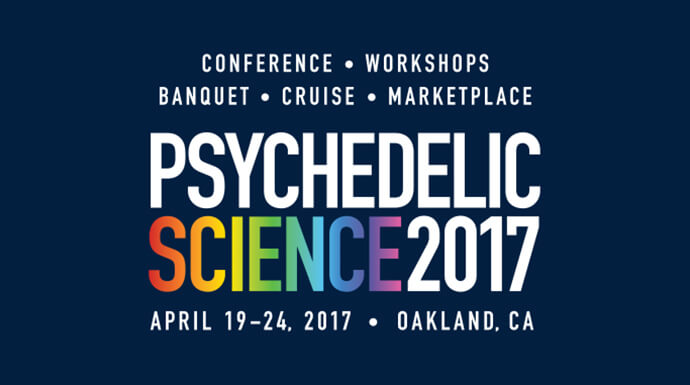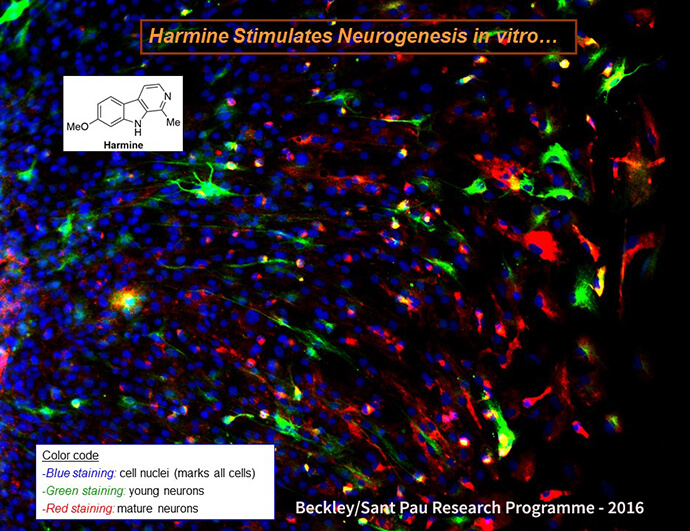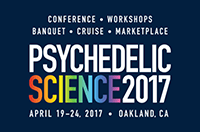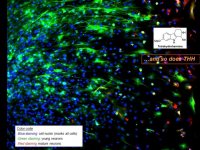
Beyond the After-Glow: Uncovering the Therapeutic Power of Ayahuasca

Indigenous Amazonian shamans have been using ayahuasca to heal the mental, physical and spiritual ailments of their communities for centuries. Image: Shutterstock
Few researchers can claim to operate quite as close to the bleeding edge of neuroscience as Jordi Riba, Ph.D., whose groundbreaking work into the effects of ayahuasca is helping to reveal how the healing power of the human mind can be mobilized. As principal investigator of the Beckley/Sant Pau Research Programme, he will be presenting his team’s latest findings at Psychedelic Science 2017 later this month.
Ayahuasca in the brain
“Ayahuasca induces an introspective state of awareness during which people experience emotionally-laden autobiographical memories in the form of visions,” explains Riba. “As a result, people often gain new insights on painful issues such as traumatic events, making it easier to overcome them. We have evidence of individuals with very serious addiction problems who were able to give up cocaine and opiates after a series of ayahuasca sessions.”
While there is nothing novel in this, and the capacity of ayahuasca to promote emotional regulation has been recognized and harnessed by Amazonian communities for centuries, Riba’s research uses neuroimaging techniques to take us a step deeper: “Under ayahuasca, we see that neural activity increases in the visual areas of the brain and also in regions involved in processing memories and emotion,” which helps to explain how the brew produces such meaningful psychedelic visions.
Looking beyond the immediate visionary effects of ayahuasca, the Beckley/Sant Pau team are now turning their attention to the much-talked-about “after-glow” that accompanies psychedelic experiences, often lasting several days or weeks. “This period has traditionally been considered as a window of opportunity for psychotherapeutic intervention, and now we have the neuroimaging data that supports this claim,” says Riba.
Shedding light on the after-glow

“We have found that during the after-glow, the interaction between brain areas associated with the sense of self are more connected to other regions that process autobiographic memories and emotion,” he explains.
In particular, a brain network called the default mode network, which processes aspects of selfhood like self-awareness, becomes less tightly bound and more interconnected with the rest of the brain immediately after drinking ayauhuasca. Significantly, this alteration in brain connectivity was found to correlate with an increase in certain traits associated with mindfulness.
According to Riba, “mindfulness capacities are typically reduced in many forms of psychopathology,” suggesting that the ayahuasca after-glow may hold the key to treating a range of disorders.
Sure enough, a study conducted as part of the Beckley/Sant Pau Research Programme revealed that a single dose of ayahuasca produces what Riba describes as “a very fast antidepressant effect that is maintained for weeks.”
This is particularly remarkable when compared to traditional antidepressant drugs, which typically need to be taken for around a month before any clinical improvement is noticed.
Longer-term benefits: neurogenesis

Compounds present in ayahuasca were found to stimulate the birth of new neurons from stem cells
Until recently, neuroscientists believed that neurons completely lacked the ability to regenerate in the way that other body cells do, and that we are born with all the brain cells we will ever have. Consequently, any neurons that become damaged are lost forever, which is why some people develop dementia and other forms of age-related cognitive decline.
Yet it was later discovered that a small subset of neurons in the hippocampus – a brain region associated with memory – do in fact regenerate, via a process called neurogenesis.
Last year, Riba led a study in which certain compounds present in ayahuasca, such as harmine and tetrahydroharmine, were placed in a petri dish with hippocampal stem cells. Remarkably, these compounds were found to stimulate neurogenesis, causing a much higher proportion of these stem cells to develop into mature neurons than did so in their absence.
This line of research has a long way to go, but if these results can be replicated in vivo, we could be looking at a new pathway towards the treatment of Alzheimer’s, Parkinson’s and other neurodegenerative disorders.
Words: Benjamin Taub
Podcast
- All
Links
- All
Support
- All
BIPRP
- All
Science Talk
- All
Amanda's Talks
- All
- Video Talk
- Featured
- 2016 Onwards
- 2011-2015
- 2010 and Earlier
- Science Talk
- Policy Talk
One-pager
- All
Music
- All
Amanda Feilding
- All
Events
- All
Highlights
- All
Psilocybin for Depression
- All
Current
- All
Category
- All
- Science
- Policy
- Culture
Substance/Method
- All
- Opiates
- Novel Psychoactive Substances
- Meditation
- Trepanation
- LSD
- Psilocybin
- Cannabis/cannabinoids
- Ayahuasca/DMT
- Coca/Cocaine
- MDMA
Collaboration
- All
- Beckley/Brazil Research Programme
- Beckley/Maastricht Research Programme
- Exeter University
- ICEERS
- Beckley/Sant Pau Research Programme
- University College London
- New York University
- Cardiff University
- Madrid Computense University
- Ethnobotanicals Research Programme
- Freiburg University
- Medical Office for Psychiatry and Psychotherapy, Solothurn
- Beckley/Sechenov Institute Research programme
- Hannover Medical School
- Beckley/Imperial Research Programme
- King's College London
- Johns Hopkins University
Clinical Application
- All
- Depression
- Addictions
- Anxiety
- Psychosis
- PTSD
- Cancer
- Cluster Headaches
Policy Focus
- All
- Policy Reports
- Advisory Work
- Seminar Series
- Advocacy/Campaigns
Type of publication
- All
- Original research
- Report
- Review
- Opinion/Correspondence
- Book
- Book chapter
- Conference abstract
- Petition/campaign
Search type



